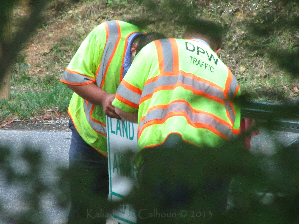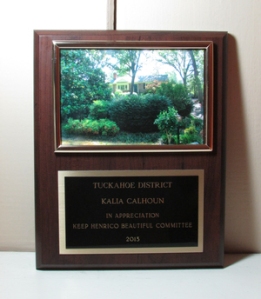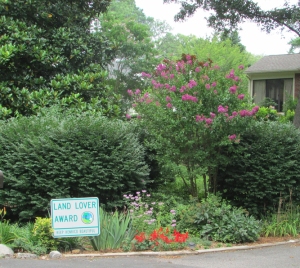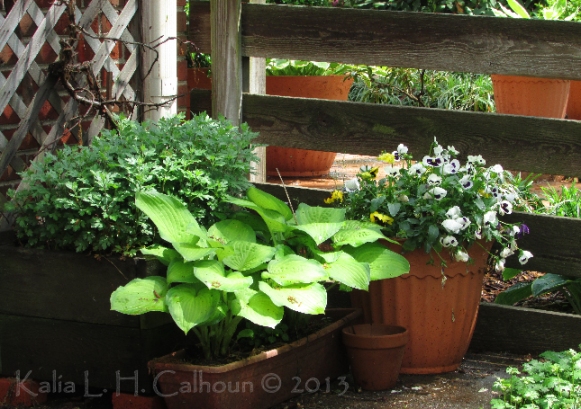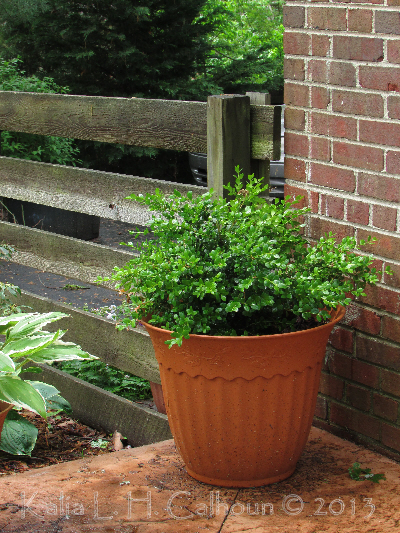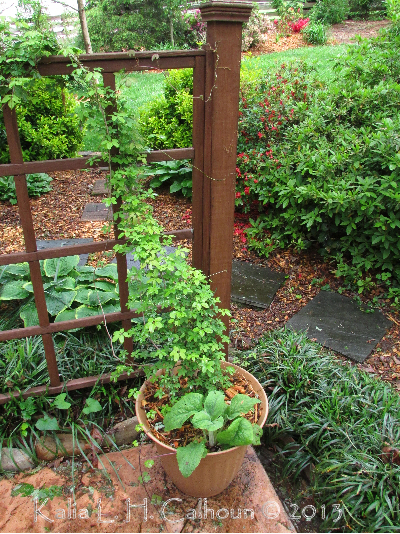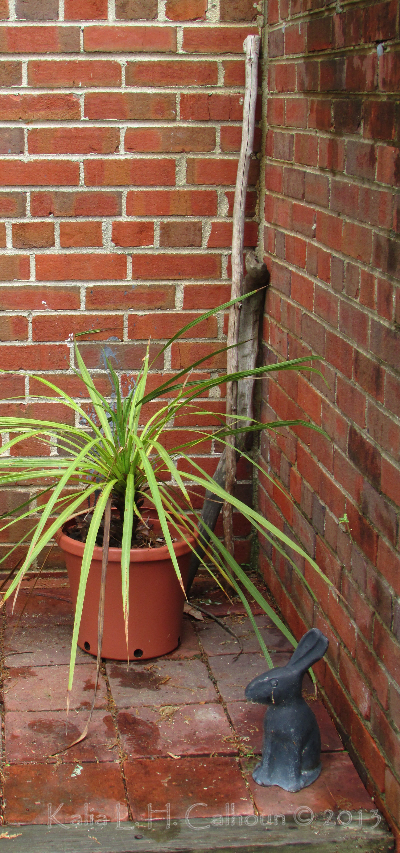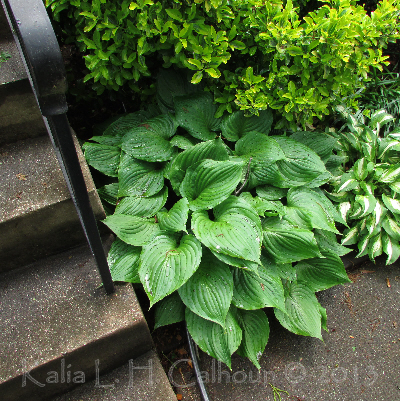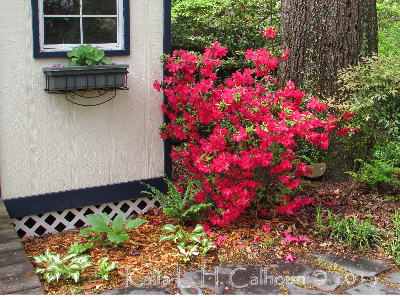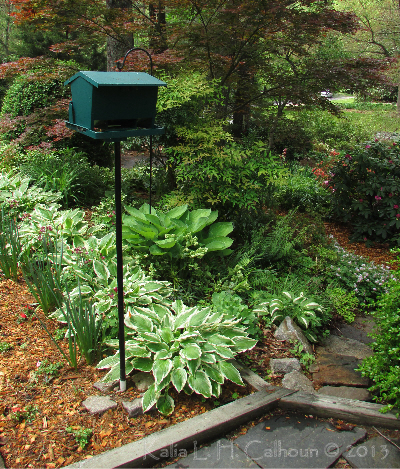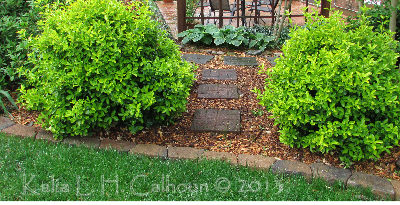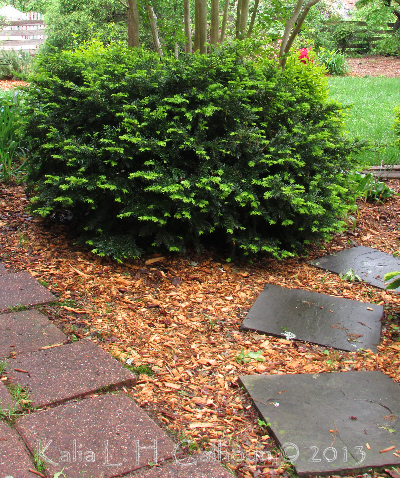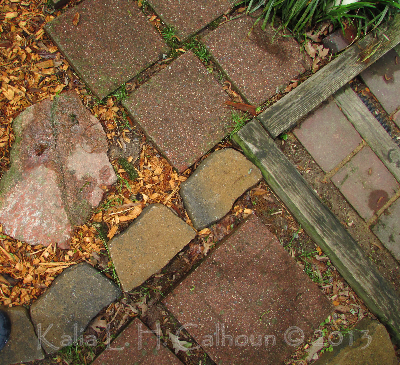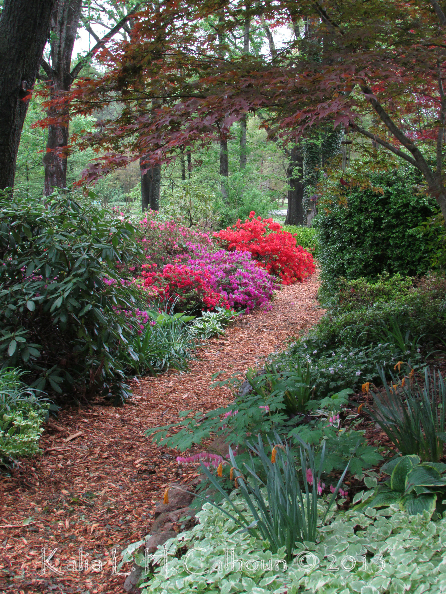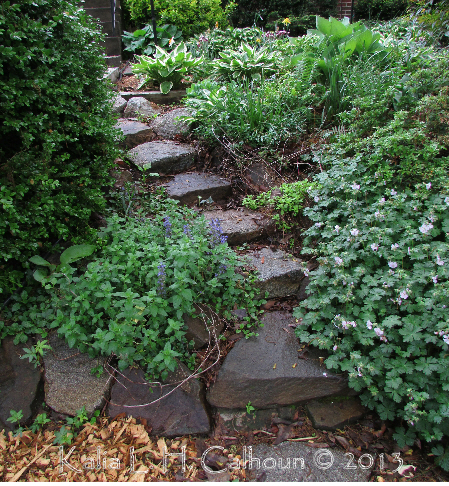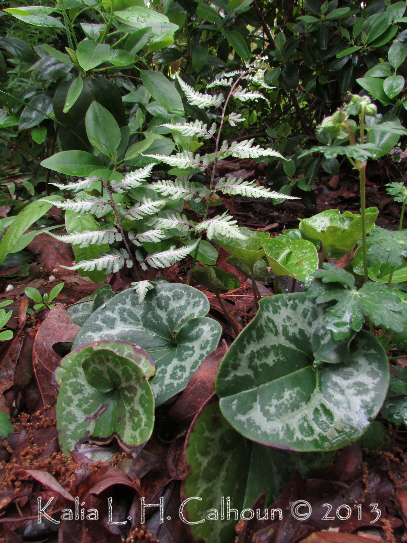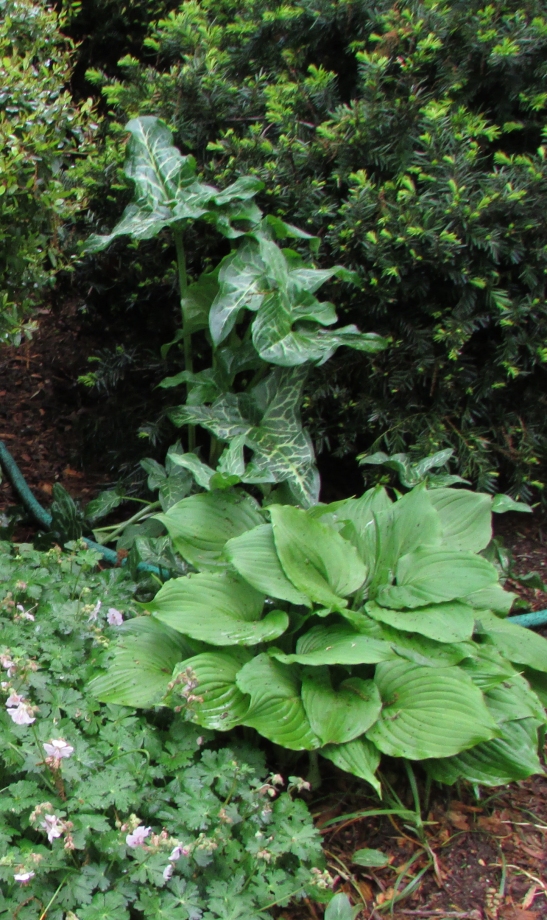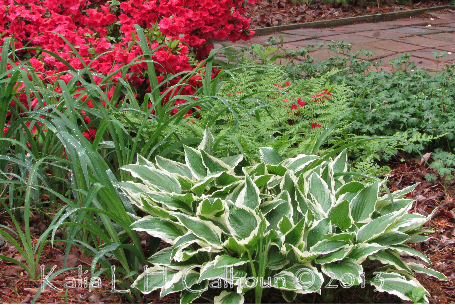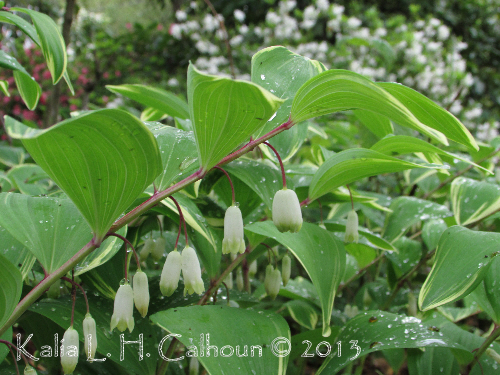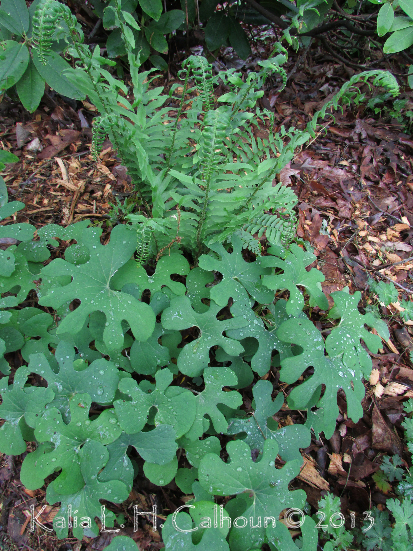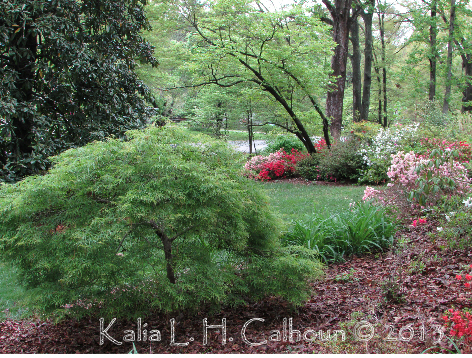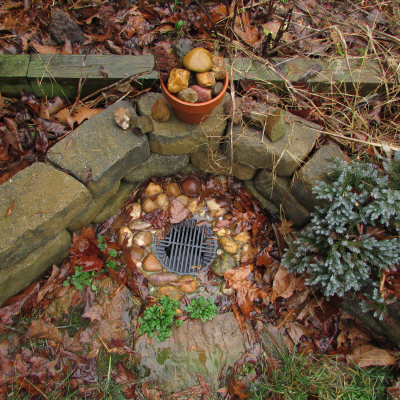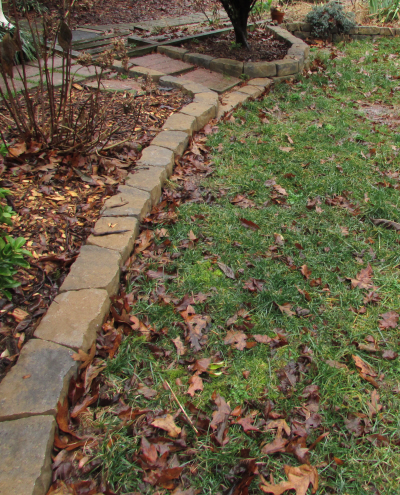Bye to Award Sign
At the beginning of the week, I was not surprised when an employee of the Department of Public Works knocked on my door. He politely told me that he was here to remove the sign in our yard. It had been a little over a month when we received an award for our yard from the county which included a sign placed in our front yard. For more details on the award, see An Award for Our Yard post.
Our month of public recognition via a roadside sign was up. So, two DPW workers pulled up the sign to save for next year’s award winner. I wonder who it will be.
An Award for Our Yard

Earlier this week, our yard won the Land Lover’s Award for our county district. Even though my husband’s name is not on the plaque, he was given recognition at the county meeting when the award was presented. I might have started the garden many years ago and done all the planting and hardscaping, but for quite a few years he has spent time every day working on keeping it tidy: free of debris, lawn mown, bushes trimmed, etc. In other words, it would look like a jungle and not a garden without his help.
UPDATE:
Today, a sign was installed in our front yard by the county:
Corners in the Garden

There are corners in my yard garden. With the angular corners of the house and the hardscaping of sidewalks, stairs and patios, there is no avoiding dealing with angular corners that come with buildings but seem out of place in an informal garden. The challenge then becomes how to deal with the inevitable corners so that there is a transition between the manmade and the natural (even if the garden was constructed by a human).
Potted plants placed in corners bring the manmade and natural together as well as obscure awkward or unattractive corners.
In the picture above, this area is an awkward corner at the end of a walk that terminates at the corner of the house. It is far more interesting with a trellis and a couple potted plants. The spot of sun on the hosta was like a spotlight so it caught my attention and made me think about how nice the corner looked with plants in it. That led to wondering how I had coped with various corners in the yard. And that thought led to taking pictures of corners in the garden to compare how they are dealt with. For the potted pansies and hostas, I have to give my husband credit for planting them, but I moved them, just a little.
After the rotted wooden deck in the back yard was replaced with a concrete patio, the area seemed even harder than before and the edges and corners seemed to need definition and softening. This potted bush partially obscures the corners and when the bush gets bigger, it will be more effective.
Cattycorner to the potted bush in the previous picture is a potted clematis vine that serves double duty by being a corner filler and providing a vine to climb the trellis.
There is a mini brick patio between the house and the driveway that has a metal bench. This corner, and the corner at the other end of the patio just needed something green and living to break up the hard lines. These plants might not be the best solution, but the serve well enough for now.
This hosta does a wonderful job of softening the corner between the base of steps and sidewalk. I like how the leaves spill over the walk and step, breaking up the hard lines, adding grace with its curved shapes and distracting the eye from the dull grey concrete with its bright green color.
When this azalea was planted, it was small, scraggly and insignificant looking. Now that it is bigger, it is filling in the space between the corner of the shed and the large oak tree. It along with the plantings at the base of the shed help soften the appearance of the building. At least it will do more so when the hostas get bigger later in the season and the bush gets a few more years growth.
Pictured above is an odd intersection of corners that surround the end of a planting bed. The slate area is the intersection between the stone steps on the right and the just out of view sidewalk on the left. The bird feeder is well placed in that it is easily visible from a comfortable viewing position inside our home as well as providing a visual end marker for the flower bed, and makes a turning point for both of the paths. This is an important turning point for the garden hose too as my husband tends to drag it down the stone steps to water the front lawn area and the hose pivots around the pole, thus minimizing damage to plants in the area.
There are several more areas where plants are used to treat corners of paths.
The entrance to this very short, three stone path is marked by two euonymus bushes, one on either side. They would have looked like sentries, except there is a third one evenly spaced to the right.
At the base of a Crepe Myrtle tree, a yew fills the corner where two path come together. I have resisted filling the small corner in front of the bush since it would just get trampled on by people shortcutting between the two paths. Not every “empty” space needs to be filled with plants.
Now here is a blank or empty space that is waiting for something to make this intersection of three paths less awkward looking. The red stone on the left will probably get a very large and heavy pot placed either on it or to the left side of it. This will help provide a visual distraction and a turning point for the garden hose.
After looking at all these pictures, the theme of how I tend to deal with corners seem to be plants, softening corners with plants.
Focusing on Foliage in the Shade Garden
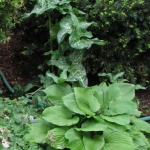
Our yard is predominately shade, with a couple of sunny areas, so overall I consider it a shade garden.
Color is secondary in my shade garden, with the primary focus being on foliage. For a brief period in spring, there are spots of bright color from flowering bulbs such as daffodils and tulips followed by large swaths of colorful Azalea and Rhododendron blooms. All summer long, the annual Impatient flowers scattered throughout the yard provide bright spots of color.
Most of the interest in our shade garden is foliage. Looking out any window of our home at any time of the year, there is foliage to rest the eyes on. It is a bit sparse in winter with only evergreen trees and bushes with leaves, but in summer it is lush with foliage from the high reaching canopy of shade trees down to small ground hugging plants. There is foliage of various sizes and shapes. For color, there are many shades of green, variegated leaves, and different shades of red.
Foliage in the shade garden began as a process of layering plants from the top down, meaning starting with the existing trees and adding plants from larger to smaller under the trees. I used this method of planting in the sunny areas too.
There were already old growth trees on the lot when we bought our home. The lawn was a paltry scattering of grass clumps in hard clay which struggled to grow under the trees. There was no topsoil in the yard, except next to the front of the house, due to erosion. Where the grass struggled to grow under the trees, I planted Rhododendrons between the trees first. Next came many Azalea bushes. Mulch was spread around all of the bushes.
Mulching accomplished several things other than aesthetics: it kept the soil moist, the soil temperature more even so it is not too hot in summer and does not freeze in winter, keeps the weeds under control (sadly does not prevent them), prevents erosion and provides a habitat for small creatures such as lizards and snakes. Now that there is a nice layer of humus under the bushes and trees, I usually only spread wood chips along the edges and on paths, leaving the leaves to act as a natural cover.
After a few year the bushes started filling in the areas under the trees and I was able to concentrate on the smaller plants such as Hostas along the edges of the shade areas and along paths. The smaller plants invite a person to examine the garden a little closer and many of them provide spots of color to create other focal points. Some are lovely just for the foliage such as Snow on the Mountain which makes a great blanket of texture. Then there are small flowering shade plants such as are: Hostas which bloom white and lavender, Bleeding Hearts with their rows of pink and white hearts, Solomon Seal which has shy little white with green accents flowers hiding under their leaves, Blood Root not only has wonderfully shaped leaves, but has delightful white blooms in spring and lemon scented geraniums with petite pale pink blooms. For winter blooms, there is Hellebores’ bright green nodding blooms. (See an earlier post for picture of Hellebores blooms at night.) There are many more shade loving small plants.
There are other bushes with interesting foliage that inhabit the shade or semi-shade in our yard. There Illicium Floridanum bushes which are actually Florida native plants. They have a leaf similar in size and shape to a Rhododendron, but with a pointed tip and the leaves are a slightly paler and more yellow green. They have a small, but very interesting deep red flower. The variety of Spirea bush that grows at the base of the Burning Bushes have small yellow green leaves on long arching thin branches and is covered with lovely clusters of tiny flowers in summer. The leaves of the deciduous Burning Bushes turn bright red in fall before falling off and leaving the stiff upright branches visible for winter interest. Although not considered bushes, but are small enough to be, are the cut leaf Japanese Maple Tree with its bright green leaves and the weeping Witch Hazel.
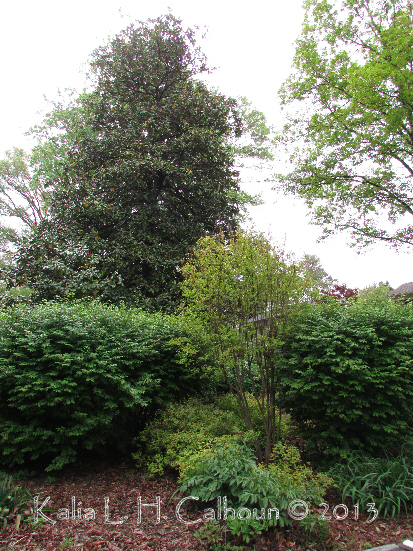
spirea at the base of dwarf crepe myrtle tree and burning bushes with a magnolia grandiflora in the background
The plants are layered visually in the sense that the trees are the tallest surrounded by the bushes and finally the smaller plants in front of the bushes. The view from the tops of the trees down to the ground is layers of foliage.
With so much foliage, the garden would be monotonous if all the leaves were the same size or the same shape or the same color. By consciously selecting plants and arranging them to show off their foliage, it makes the garden more interesting. This is done by placing plants together with foliage of contrasting sizes, shapes and colors. Of course some of the plants have been placed by birds dropping their seeds or by them spreading beyond where I originally intended, and often with interesting results. If you want an interesting garden in the winter, be conscious of what is evergreen. Not all plants need to be evergreen for them to add interest. For example, the Harry Lauder’s Walking Stick bush (Contorted Filbert) is more interesting in the winter without foliage when its twisting branches are visible against a backdrop of snow or grey winter sky.
Having plants of various foliage types deliberately planted to showcase their foliage will make for a rewarding garden, one that is interesting to explore year-round.
Drain System for Water Runoff
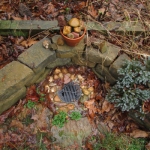
After four days straight of rain, I am glad I installed a drain system in the backyard years ago. It served well during the storm Gaston. During that storm, most of the the water went down the drain, but the rain came down faster than the small 6″ pipe could handle, so the rain water crested the wall and some spilt over. This time, it served as it is supposed to, which is to carry the water away from the house in the back yard and pipe it out to the front yard where it can drain naturally.
The drain grate is attached to a catchbasin, which connects it to the pipe that runs out to the lower level of the front yard, which slopes down towards the street. Erosion is not a problem since there is adequate ground coverage with plants and mulch.
To make the drain system work, I placed it in front of a retaining wall made of concrete blocks, which I built to direct the water towards the drain hole. Since a berm of dirt had to be made for the retaining wall, I built a second stepped retaining wall with lumber behind it. Since it is stepped, there are steps for walking and tiers of planting bed for flowers. Hopefully, I will get these flower beds tidied up soon (they became over grown) and will be able to include pictures of it for you to see.
Before we had this system, stepping out the back door after a soaking rain might mean sinking ankle deep into mud.

